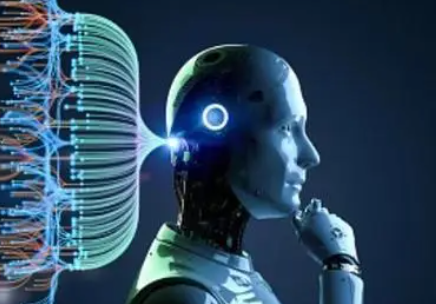Some Basic Knowledge of AI Artificial Intelligence
-
AIGC has been trending recently, and this year might be the singularity of artificial intelligence, especially with the advent of ChatGPT, which has further accelerated the development of AI. Artificial Intelligence (AI) is a discipline that involves multiple fields such as computer science, mathematics, statistics, psychology, and philosophy, primarily focusing on how to enable computers to possess human-like intelligence.

Here are some basic knowledge, directions, and principles of artificial intelligence:
Basic Knowledge of Artificial Intelligence:
- Machine Learning: The process of enabling computers to automatically learn patterns and rules from data, thereby achieving autonomous learning and intelligence.
- Deep Learning: A specialized method of machine learning that uses multi-layer neural networks to simulate the structure and function of the human brain, capable of handling more complex data and tasks (currently the mainstream of AI).
- Natural Language Processing (NLP): The process of using computer technology to analyze, understand, and generate human language, a key technology for achieving human-computer interaction and intelligence.
- Computer Vision: The process of using computers to process and analyze visual data such as images and videos, enabling intelligent tasks like object recognition, scene understanding, and image generation.
Directions of Artificial Intelligence:
- Machine Learning Algorithms: Includes research and application of different types of algorithms such as supervised learning, unsupervised learning, and semi-supervised learning, used to solve problems like classification, regression, clustering, and dimensionality reduction.
- Deep Learning Models: Includes research and application of different types of deep learning models such as convolutional neural networks, recurrent neural networks, and autoencoders, used to solve problems like image recognition, natural language processing, and speech recognition.
- Natural Language Processing Technologies: Includes research and application of different types of NLP technologies such as machine translation, text generation, and sentiment analysis, used in scenarios like intelligent customer service, automatic summarization, and voice assistants.
- Computer Vision Technologies: Includes research and application of different types of computer vision technologies such as object detection, image segmentation, and image generation, used in scenarios like intelligent security, autonomous driving, and virtual reality.
Principles of Artificial Intelligence:
- Models: AI systems represent knowledge and patterns through mathematical models. Common models include neural networks, decision trees, support vector machines, and Bayesian networks. The choice of model is closely related to the application scenario, and different models have different strengths and weaknesses.
- Algorithms: AI systems use different algorithms to achieve model learning and reasoning. Common algorithms include supervised learning, unsupervised learning, semi-supervised learning, and reinforcement learning. The choice of algorithm also depends on the characteristics of the application scenario and task.
- Data: Data is a crucial component of AI systems, and different datasets play important roles in training and testing. The quality, volume, and diversity of data also affect the performance of AI systems.
- Feature Extraction: Feature extraction involves extracting useful information from raw data for training and reasoning. Methods include manually designed features and automatically learned features.
- Optimization Algorithms: Optimization algorithms are used to adjust model parameters during training to achieve optimal performance. Common optimization algorithms include gradient descent, Newton's method, and conjugate gradient methods.
- Reasoning and Decision-Making: Reasoning and decision-making involve using existing knowledge and models to process new input data and produce outputs. Methods include forward propagation, backward propagation, maximum likelihood estimation, and Bayesian inference.
- Fusion and Integration: AI systems often need to integrate multiple models, algorithms, and data to achieve better performance and results. Methods include hybrid models, ensemble learning, and transfer learning.
Goals of Artificial Intelligence:
The goal of artificial intelligence is to enable machines to perform complex tasks like humans, including perception, cognition, understanding, reasoning, learning, and decision-making. Many people believe that AI is a derivative of bionics, but in fact, bionics is just one research direction within AI, which studies the intelligent behavior of organisms to design and build more intelligent systems.
AI research is not limited to bionics; it also includes many other aspects such as machine learning, deep learning, data mining, optimization algorithms, reasoning, and decision-making. Although the ultimate goal of AI is to make machines think like humans, the methods and techniques of AI research do not entirely rely on bionics.
